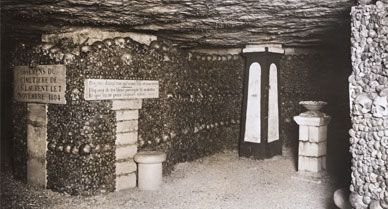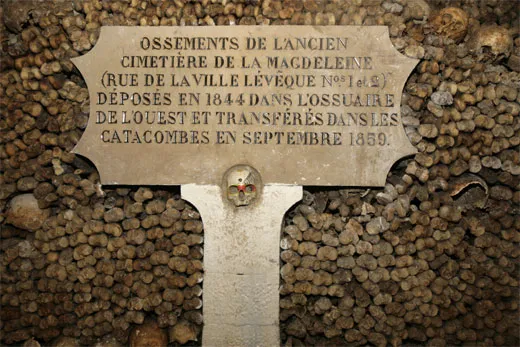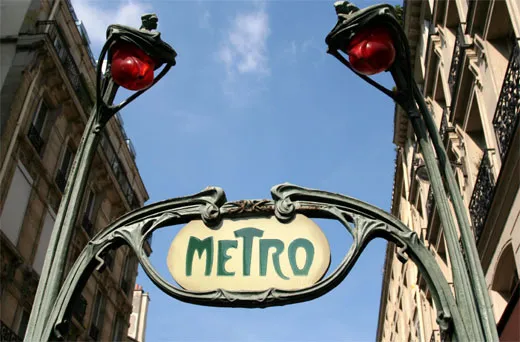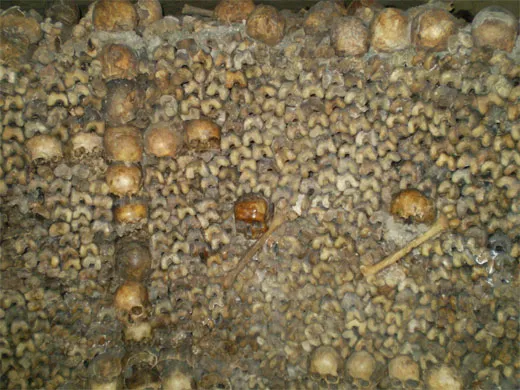Snapshot: Paris Underground
Tunneling into the fascinating dark underbelly of the City of Lights
/https://tf-cmsv2-smithsonianmag-media.s3.amazonaws.com/filer/snap-paris631.jpg)
An extensive network of abandoned quarries, sewers and subway lines twists beneath modern Paris. Read about this netherworld below then click on the main picture to view a photo gallery.
Origins: About 45 million years ago, Paris was part of a vast shallow sea whose shifting waters left sediment layers that over time compressed into massive stores of limestone and gypsum. The Parisii, the area's early tribal inhabitants, made little use of the resource. When the stone-loving Romans arrived in the first century B.C., they began a legacy of quarrying. By 1813, the year digging beneath Paris was banned to prevent further destabilization of the ground, some 170 miles of labyrinthine tunnels had been carved far below the city proper. In 1786, to stanch the spread of disease from overcrowded cemeteries, a portion of these old quarries were consecrated as burial grounds, and human remains were transferred there. Burials in the newly anointed "catacombs," both direct and as cemetery transfers, continued until 1860.
Napoléon Bonaparte ordered the creation of the underground sewer system, now some 300 miles long, in the early 19th century. Baron Georges-Eugène Haussman, the urban planner who shaped modern Paris, expanded the network, and it was finally completed in 1894 under Napoleon III.
Launched in 1900, the Paris Metro was not the first underground rail in Europe—London's Tube holds that honor—but it's one of the largest and most convenient. Almost every address in Paris is within a third of a mile of a Metro station.
The appeal: We love what makes us scream or squirm. In the catacombs, visitors descend more than 60 feet to a stone entrance bearing the warning (in French), "Stop! This is the Empire of Death." Beyond that welcome, the bones of six million people line the dim tunnels. Across town, tourists can channel the hero of Les Misérables, Jean Valjean, by exploring the city's sewer system. Those able to stomach the full tour pass through exhibits illustrating sewage technology to reach gangplanks that hover alongside a gently flowing river of water and human waste, sometimes even glimpsing a fat rat or two (toy versions of which are available in the gift shop).
Interesting historical facts: In 1783, a porter named Philibert Aspairt got lost in the pitch-black quarry tunnels. His body wasn't found until 1804, just a few feet from an exit passage. During World War II, both the French Resistance and the Nazi forces used the ancient quarries as operational bases. Legend has it that they observed an unofficial ceasefire while underground. Until recently, farmers cultivated mushrooms, les champignons de Paris, in portions of the old quarry tunnels.
Famous sons and daughters: Many of the players in the French Revolution found their final resting places in the catacombs. Elizabeth of France, sister of King Louis the XVI, as well as the revolutionaries Robespierre and Georges Danton, all of whom were guillotined during the war, were buried in the catacombs—as was, perhaps, Madame de Pompadour, and the actor Scaramouche were among those transferred to the catacombs from the overcrowded cemeteries.
Then & Now: At the turn of the 19th century, the city was scandalized and titillated by the news of a secret concert held in the catacombs. On the program that night: Frédéric Chopin's Funeral March, Camille Saint-Saën's Danse Macabre and Ludwig van Beethoven's Third Symphony, the Eroica. Today, urban cavers, or cataphiles, throw parties, carve sculptures out of the limestone and decorate the walls with everything from basic graffiti tagging to minor masterpieces. Just a few years ago, police discovered in one of the tunnels a fully functional movie theater, some 4,300 square feet, powered by pirated electricity.
Who goes there?: Public tours of the catacombs commenced in 1810, and tours of the sewers began in 1867. From the start, crowds thronged at each. The king of Portugal was the first of many dignitaries to tour the sewers. Today, the Paris Sewer Museum and the Catacombs of Paris, on-site museums run by the city, draw hundreds of thousands of visitors each year. To explore all three sets of tunnels in one day, start with the sewers on the Left Bank of the Seine, then zip over to the catacombs by Metro.
Siobhan Roth, based in Washington, D.C., last wrote about a third-generation French perfumer for Smithsonian.com.
/https://tf-cmsv2-smithsonianmag-media.s3.amazonaws.com/accounts/headshot/eric-jaffe-240.jpg)





/https://tf-cmsv2-smithsonianmag-media.s3.amazonaws.com/accounts/headshot/eric-jaffe-240.jpg)